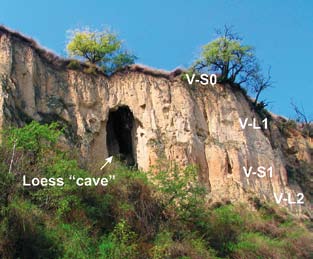The Loess “Cave” Near the Village of Surduk - an Unusual Pseudokarst Landform in the Loess of Vojvodina, Serbia
DOI:
https://doi.org/10.3986/ac.v38i2-3.124Povzetek
Loess “caves” (piping caverns, wells, tunnels) exposed in loess cliffs are rare pseudokarst landforms that can be regarded as morphological equivalents to collapse dolines or sinkholes formed in classical karst terrains. This study presents the results of an investigation into a loess cave exposed in a loess cliff on the right bank of the Danube River near the village of Surduk in the Vojvodina region, Serbia. This study provides a first detailed morphologic description of this young pseudokarstic landform formed by piping erosion, probably partly supported with carbonate dissolution. The loess “cave” has a height of approximately 12 m and average diameter of around 3.5 m. In the middle of the cave ceiling there is a window. Observations indicate that over the last several years, the morphological characteristics of the landform have been stable. The main aim of this study is to provide a better understanding of the evolution of the piping process in the thick loess-paleosol sequences in the Vojvodina region, northern Serbia. A key role in the genesis of this landform was the short distance between an initial loess doline and a cliff exposing loess sediments, providing the possibility for the lateral removal of loess material. The presence of Robinia pseudoakacia trees around the initial depression modulated the evolution of the doline and provides support for the loess cavern roof. The nature of the dynamic erosional processes on the steep cliffs of the soft loess sediment indicates a very limited lifetime of this pseudokarstic landform.
Prenosi

Prenosi
Objavljeno
Kako citirati
Številka
Rubrike
Licenca
Avtorji jamčijo, da je delo njihova avtorska stvaritev, da v njem niso kršene avtorske pravice tretjih oseb ali kake druge pravice. V primeru zahtevkov tretjih oseb se avtorji zavezujejo, da bodo varovali interese založnika ter da bodo povrnili morebitno škodo.
Podrobneje v rubriki: Prispevki




